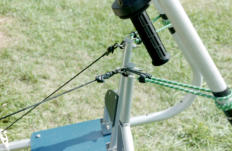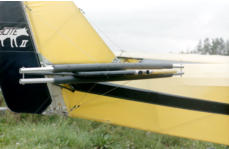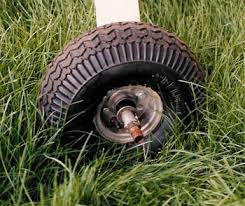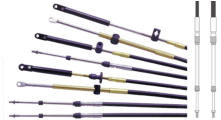
Lorem Ipsum is simply dummy text of the printing and typesetting industry. Lorem Ipsum has been
the industry's standard dummy text ever since the 1500s, when an unknown printer took a galley of
type and scrambled it to make a type specimen book. It has
survived not only five centuries, but also the leap into
electronic typesetting, remaining essentially unchanged.



Ultralight Aircraft Control System Inspection.

UltralightNews.com

Other control system failure may result form the cable rubbing against tubing or metal.
If your aircraft control system uses clips and rings to connect push pull tubes or cables to a elevator
or rudder it is recommended that this be replaced with AN nuts and bolts .
Many ultralights use teleflex cables to operate control systems.
When subjected to environmental conditions such as severe
wind, these have failed, or partially failed.
I test flew Buccaneer SX without noticing that the cable,
operating the ailerons was cracked. It failed in a turn resulting
in a spiral turn, luckily it was not very steep and I was able to
right it with rudder, and landed safely.
When storing a craft outside it is suggested that you make up a set of aileron/elevator stops.
Check all moving parts of the control system for wear or damage.
Look at the aileron hinges for cracks. In an aircraft using rivets look for loose fitting hinges, a sign of
rivet wear.
Examine elevator horns, aileron push pull tubes, rudder pedals, at attachment points for wear at
hinges or eye bolts.
Ultralight Aircraft Landing gear:
Check the tires for wear
Check the wheel bearings for signs of failure.
Check the rim for signs of damage.
Check the landing gear welds or attachments area
where the wheel and landing gear join together.
Check the landing gear for signs of bending
Check landing gear for signs for cracking or elongation
of holes .
Ultralight Aircraft, buying a used ultralight aircraft,
how to buy a used NOT abused ultralight!
Control system: The control system is a part of the craft that has to be checked thoroughly! Some older designs used ROPE, to
operate control systems . Do not fly any aircraft that uses rope and knots to operate a control system. Have these replaced with
steel cable, using proper NICOS, and AN fittings. shows a manufacturer using a plastic clip to connect rope to control system.
In Canada one of these, operating the elevator control system, failed during winter conditions,
when under load it cracked and broke resulting in the owner
of the aircraft being hospitalized for 6 months.
The aircraft was completely destroyed!
Another problem in enclosed ultralights is dirt and debris
collecting around the control cable where it enters, a plastic
outer cable. The dirt acts much like sandpaper or a file,
resulting in the cable fraying and failing .
If the outer plastic coating moves in the retaining clamp, it allows metal on metal contact,
resulting in failure of the control cable, or failure of the retaining clamp. This can result in loss of
elevator or rudder control as happened at Sun N fun, causing a CGS Hawk to crash.



















